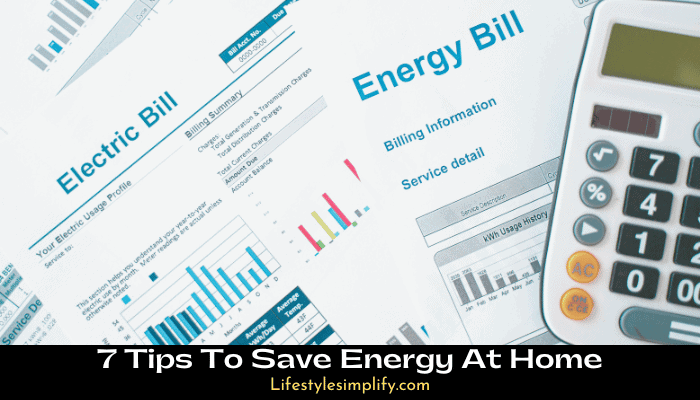Energy conservation is essential not only for our planet but also for our pockets. With the rising energy costs and the increasing awareness of our environmental impact, saving energy at home has never been more critical. Implementing simple changes can significantly affect your energy bills and carbon footprint. Here are seven actionable tips to save energy at home:
Upgrade Insulation
Insulation plays a critical role in maintaining a comfortable temperature inside the house. By ensuring your home is adequately insulated, you can:
‣ Retain Heat: Prevent warmth from escaping during winter months.
‣ Keep Cool: Reflect the sun’s rays and keep interiors cool during the summer.
Investing in good quality insulation for your walls, roof, and floors can reduce the need for artificial heating and cooling, thus saving energy.
Mind Your Appliances
‣ Switch Off: Ensure appliances are turned off and not left on standby. Devices left on standby can consume a significant amount of power over time.
‣ Energy-Efficient Models: When purchasing new appliances, look for energy-efficient models. These appliances consume less energy for the same functionality.
Boiler & Central Heating Maintenance
Regular maintenance of your boiler & central heating system ensures it runs efficiently. A well-maintained system uses less energy, providing the following benefits:
‣ Lower Energy Bills: An efficient heating system consumes less fuel.
‣ Prolonged Equipment Life: Regularly serviced equipment tends to have a longer lifespan.
‣ Consistent Temperature: Ensure a comfortable temperature throughout the home.
Use LED Bulbs
Lighting accounts for a significant portion of home energy consumption. Making the switch to LED bulbs can save energy because:
‣ Longevity: LED bulbs last up to 25 times longer than traditional incandescent bulbs.
‣ Efficiency: They use about 75% less energy than traditional bulbs.
‣ Less Heat: LED bulbs produce less heat, reducing the need for cooling in warmer months.
Harness Natural Light
Utilizing natural light can drastically reduce your dependence on artificial lighting. Here’s how:
‣ Open Curtains: Allow sunlight to flood in during daytime hours.
‣ Light Colors: Use light-colored paint and decor to reflect natural light and brighten up rooms.
‣ Strategic Landscaping: Planting trees or installing shades can shield your home from direct sunlight during summer, reducing the need for cooling.
Invest in Smart Thermostats
Smart thermostats learn your heating and cooling preferences over time and adjust accordingly:
‣ Automate: Set the thermostat to lower the heat when you’re not at home or during nighttime.
‣ Monitor: Keep track of energy consumption and make informed decisions.
‣ Remote Control: Adjust settings remotely using smartphone apps, ensuring energy isn’t wasted if plans change.
Be Water-Wise
Heating water can be a significant energy expense in many homes. Here’s how to save:
‣ Low-Flow Fixtures: Install low-flow showerheads and faucets to reduce water usage.
‣ Fix Leaks: A dripping tap can waste much water over time. Regularly check for leaks and fix them promptly.
‣ Water Heater Maintenance: Regularly service your water heater to ensure it operates efficiently. Insulate the water heater and pipes to prevent heat loss.
Conclusion
Saving energy at home doesn’t require massive investments or lifestyle changes. Small, consistent actions can lead to significant energy savings and reduce environmental impact – here is some advice to help you. By implementing the above tips, from maintaining your boiler & central heating system to harnessing natural light, you can create an energy-efficient home that benefits both the planet and your pocket.
![]()



